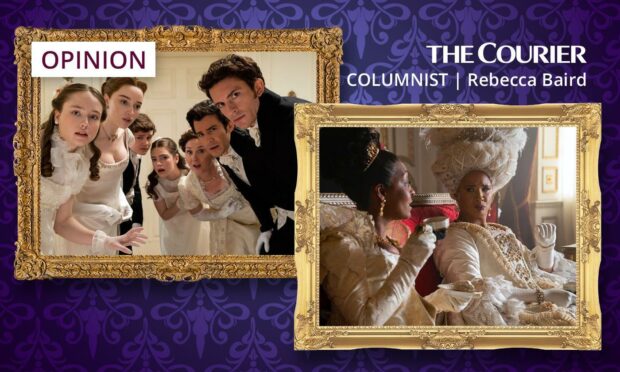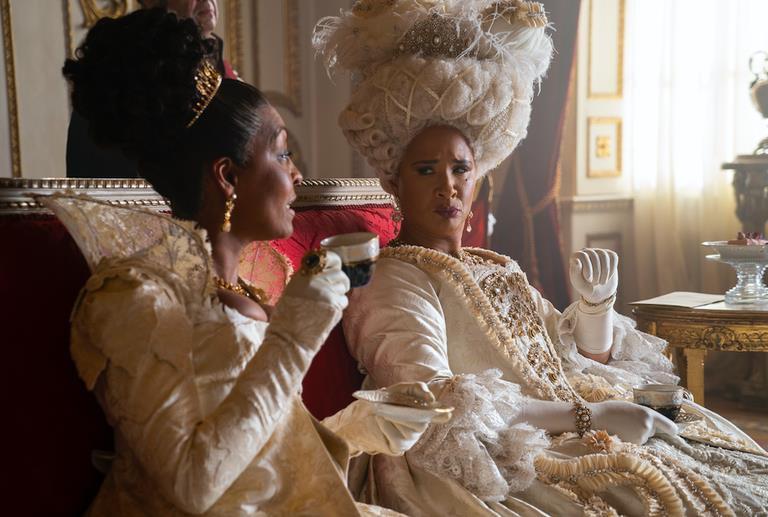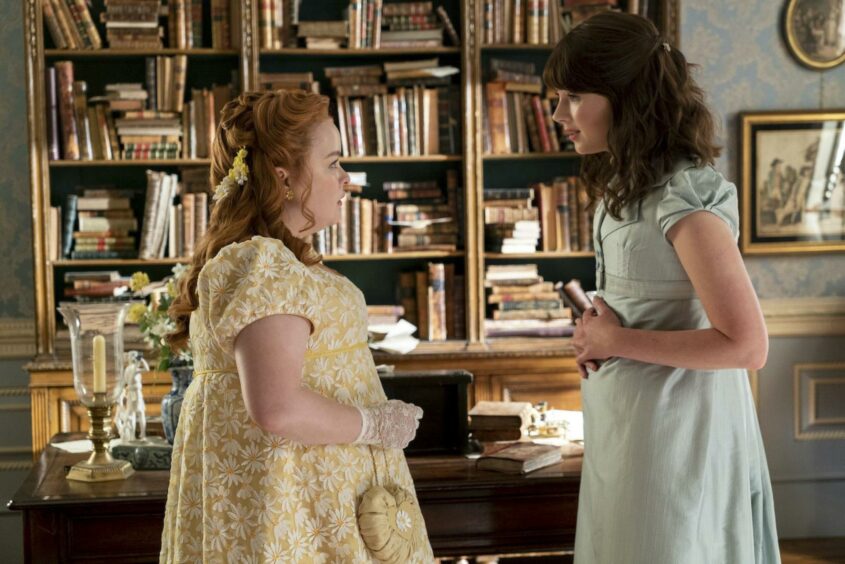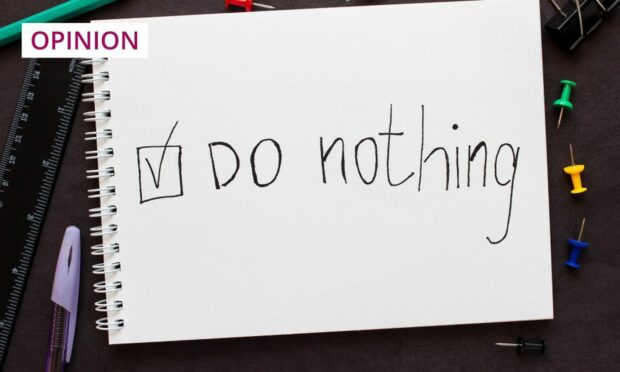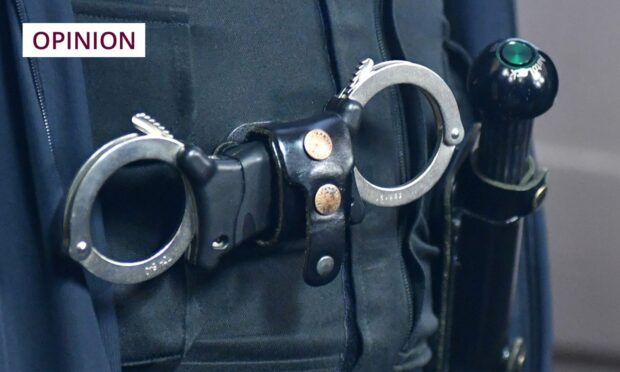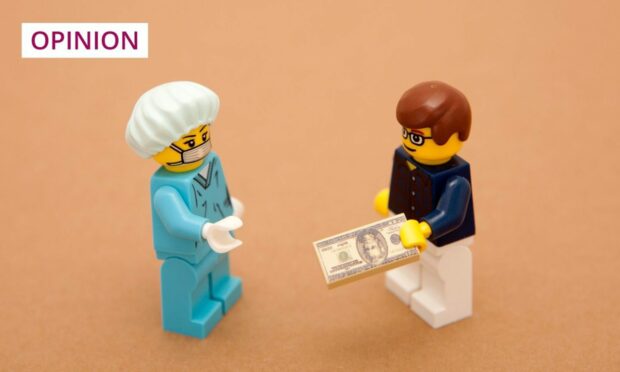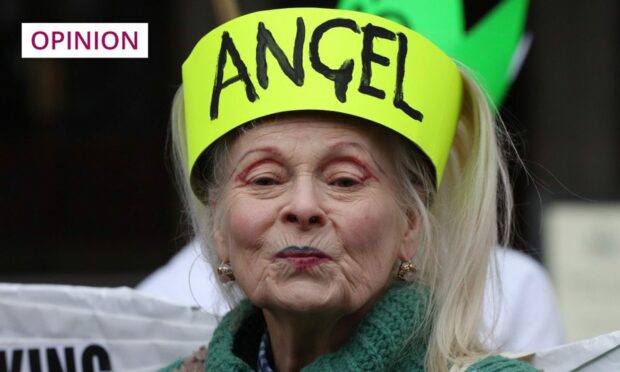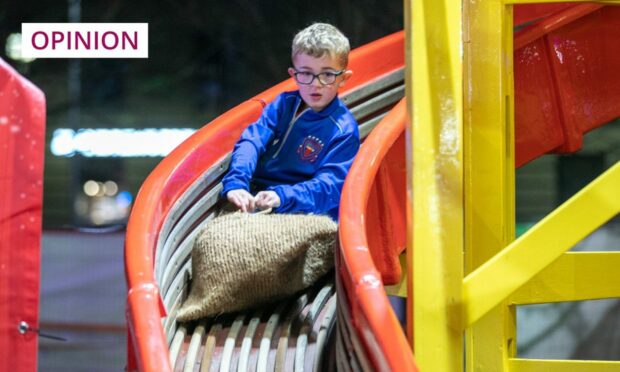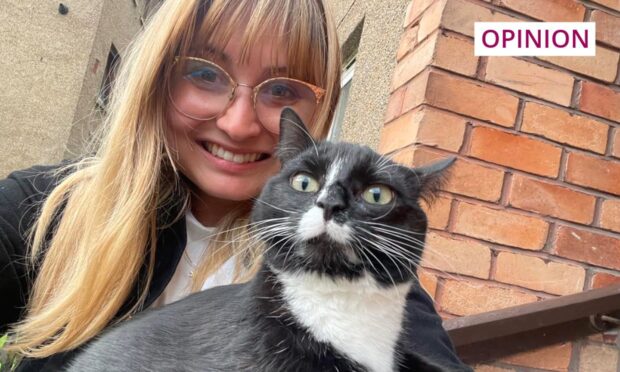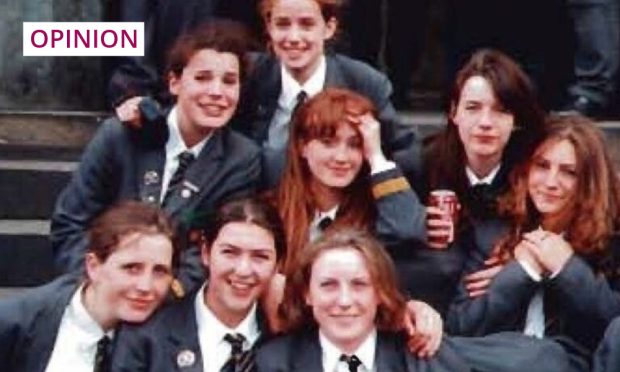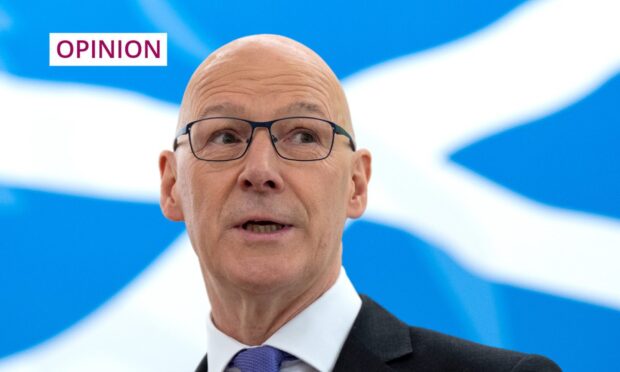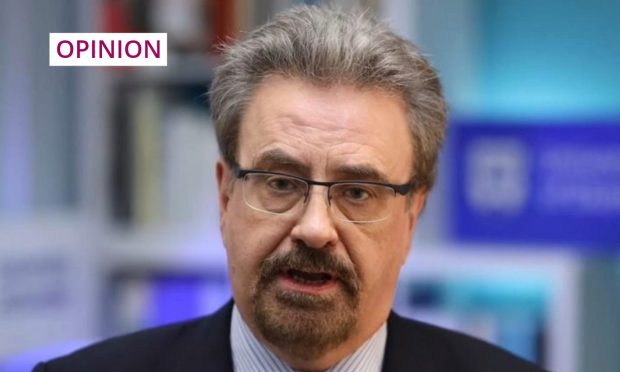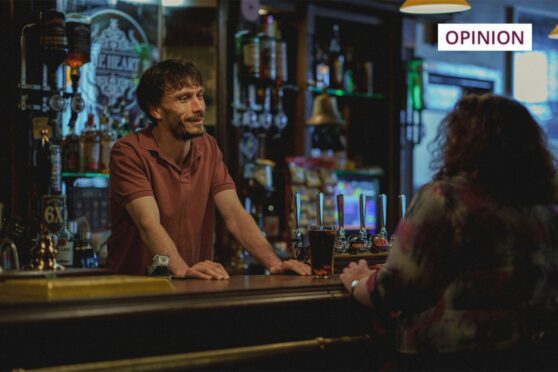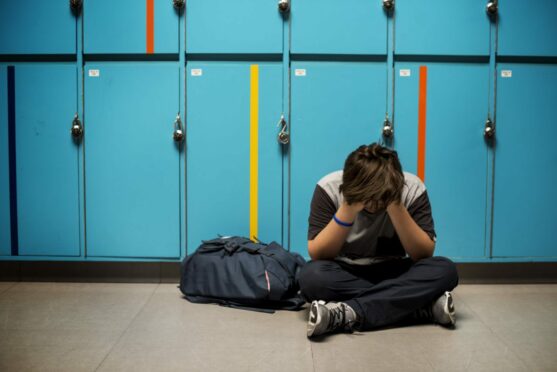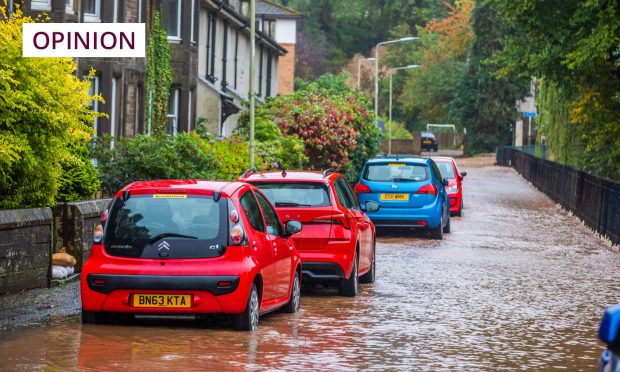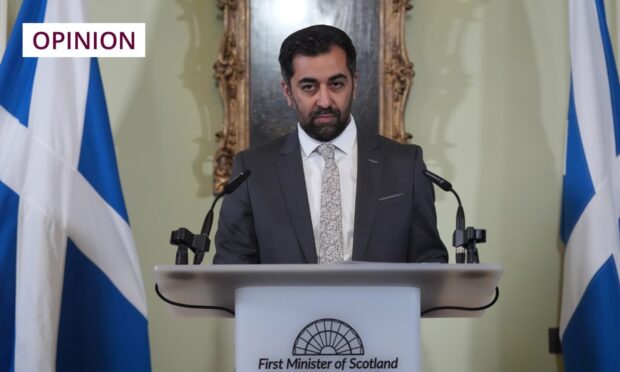Between orchestral covers of Madonna’s Material Girl and beautiful brother Benedict’s brilliant one-liners, there’s a lot to love in the latest season of Bridgerton.
But for me, one thing shines even brighter than this season’s “diamond” Edwina Sharma – the precision-cut dialogue between the characters of the ton.
It’s there in Edwina’s graceful handling of wife-hungry eldest Bridgerton Anthony’s gruelling interrogations.
There too in Lady Danbury’s between-the-lines advice to reluctantly lovestruck spinster Kate.
The exchanges in this Regency fever dream are full of dreadfully exacting – or playfully countering – verbal sparring.
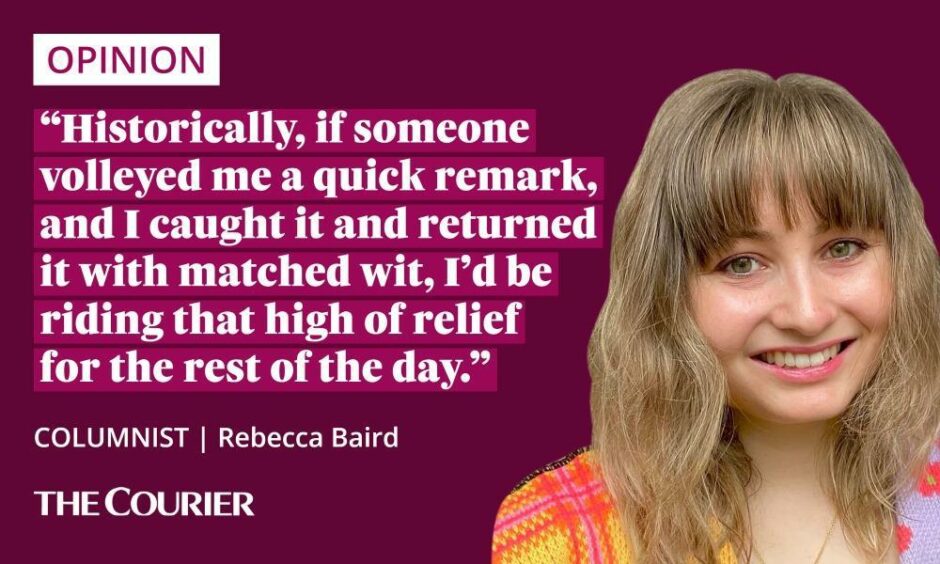
Whether facing friend or foe, they all seem to know just what to say. And I envy that, even more so than usual.
Of course, it helps that Bridgerton is scripted, so they literally do know what to say.
But just as the period drama’s contrived nostalgia has me lusting after floaty white nightgowns and squat little hardbacks, this rose-coloured version of bygone Britain has me longing for that seemingly outmoded, overly-wordy, subtext-saturated, syntactically-taxing style of conversation.
Technology has a lot to answer for
Don’t get me wrong here, I’m not suggesting we go back to the bad old days by any stretch.
I’m certainly not up for sewing up my straight-talking, sweary mouth in favour of sitting down and shutting up like a lady.
I’m also not advocating skirting meaning in favour of flowery phrases when it comes to the chats that matter.
But I am wondering: When did talking become a means to an end, rather than – as it is on the ‘ton – an end in itself?
Far be it for me to admit that my elders were right, but I’ll say it, this once: It’s that bloody phone.
At least, I think technology has a part to play in the demise of dialogic artistry.
Flair requires focus. And it’s hard to focus on any one conversation when we have a device flinging us dozens of discussions at once.
Questions of etiquette – 2022-style
Then of course, you have the two warring factions of speaking out loud – etiquette and free speech.
This conflict has always existed but it’s been amplified in our era of hyper-communication and cancel culture
Etiquette, which sounds as outdated as the Featherington girls’ wardrobes this season, is actually a very persistent force in modern discourse.
Behavioural etiquette is still accepted by the masses. Everyone knows that if the bartender goes to serve you ahead of someone who’s been waiting longer, you have to direct them to the person who was there first.
But spoken and written etiquette has been demonised in recent years under its other name: ‘political correctness’.
Necessary conversations about identity politics and language have allowed for huge strides towards a still-distant equality for marginalised identities.
But when the etiquette of one space, for example the niche-ly normalised habit of asking for and sharing one’s own pronouns in LGBTQ+ spaces, is deemed the policing of language in another (enter: the ‘you can’t say anything anymore’ brigade), meaningful conversation breaks down.
When ‘free speech’ is called into question, bare communication immediately becomes the goal, rather than any sort of conversational craftsmanship.
Which is sad, but let’s cross our tongues and tie our fingers that we’re getting there.
Has the pandemic left us speechless?
However, for me, the biggest barrier to an elegance of eloquence in 2022 seems obvious.
Dare I say it? (hehe) It’s the old Covid.
I’ll admit, even before the pandemic I wasn’t any sort of loquacious savant.
I’ve never had a confident enough grip on real-life conversation to steer it into banter by myself.
Historically, if someone volleyed me a quick remark, and I caught it and returned it with matched wit, I’d be riding that high of relief for the rest of the day.
I’m chatty enough, but I’ve never been full of the chat. Know what I mean?
This is likely why I’m a writer – no need to live-react to a blinking cursor, right?
It’s much easier to be a Whistledown wallflower, making exacting observations after the fact, than the jewel in the party’s crown.
It’s also why I love texting, and prefer voice-noting to phone calls.
My wit, while sharp, is just not quick.
So it’s no wonder that after two years of Zoom and Teams etiquette – mute when you’re not talking on a group call, compulsively ask if folk can see your screen, do NOT be the first to put your camera on – I’ve now completely forgotten how to navigate the physical, real-time, spoken world.
Simply bumping into someone I know fills me with dread.
Spontaneous interactions leave me feeling wrung-out, inadequate, picking over every stilted word I’ve choked out.
Talking, I realise now, has become a source of anxiety for me.
But ludicrous and OTT as it is, Bridgerton has helped.
Bridgerton’s got me blethering again
It’s reminded me that conversation can be a minefield, yes – but it can also be an art form.
One I’d really like to get good at again.
There’s something special about not having time to consider the consequence of what you’ll say, and speaking your mind anyway.
And there’s a magic in the spontaneity of speaking that you can’t capture on a page.
So maybe it’s time I swapped the stumble for style, and started talking for fun again – just like they do on the ton.
